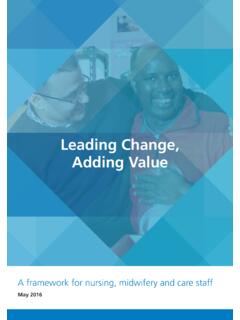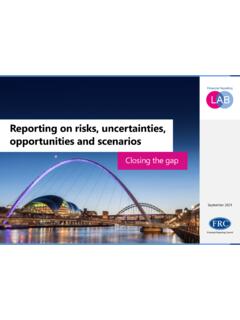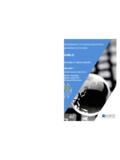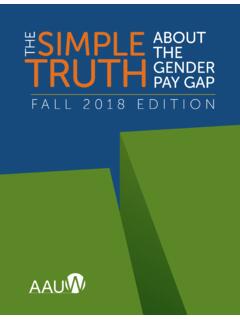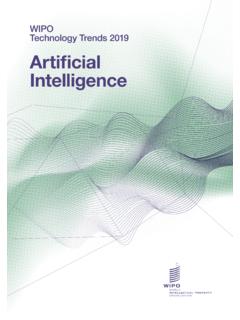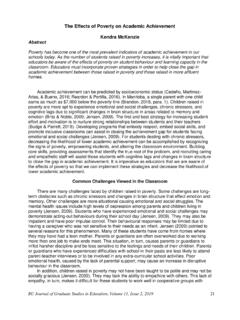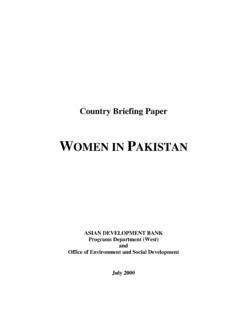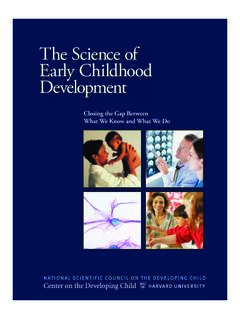Transcription of 1 -1 0 THE STATE 1 OF FOOD 20 AND AGRICULTURE
1 2010-11 ISSN 0081-4539 THE STATE OF FOOD AND AGRICULTUREWOMEN IN AGRICULTUREC losing the gender gap for developmentCopies of FAO publications can be requested from:SALES AND MARKETING GROUPO ffice of Knowledge Exchange, Research and ExtensionFood and AGRICULTURE Organization of the United NationsViale delle Terme di Caracalla00153 Rome, ItalyE-mail: (+39) 06 57053360 Web site: on front cover and page 3: All photos are from the FAO STATE OF FOOD AND AGRICULTUREFOOD AND AGRICULTURE ORGANIZATION OF THE UNITED NATIONSRome, 2011 ISSN 0081-45392010-11 The designations employed and the presentation of material in this information product do not imply the expression of any opinion whatsoever on the part of the Food and AGRICULTURE Organization of the United Nations (FAO) concerning the legal or development status of any country, territory, city or area or of its authorities, or concerning the delimitation of its frontiers or boundaries. The mention of specific companies or products of manufacturers, whether or not these have been patented, does not imply that these have been endorsed or recommended by FAO in preference to others of a similar nature that are not designations employed and the presentation of material in the map does not imply the expression of any opinion whatsoever on the part of FAO concerning the legal or constitutional status of any country, territory or sea area, or concerning the delimitation of 978-92-5-106768-0 All rights reserved.
2 Reproduction and dissemination of material in this information product for educational or other non-commercial purposes are authorized without any prior written permission from the copyright holders provided the source is fullyacknowledged. Reproduction of material in this information product for resale or other commercial purposes is prohibited without written permission of the copyright holders. Applications for such permission should be addressed to: Chief Electronic Publishing Policy and Support BranchOffice of Knowledge Exchange, Research and ExtensionFAO Viale delle Terme di Caracalla, 00153 Rome, Italy or by e-mail to: FAO 2011iiiContentsForeword viAcknowledgements viiiAbbreviations and acronyms xPart IWomen in AGRICULTURE : closing the gender gap for development 11. the gender gap in AGRICULTURE 3 Structure of the report and key messages 5 Key messages of the report 52. Women s work 7 Women in AGRICULTURE 7 Women in rural labour markets 16 Key messages 223.
3 Documenting the gender gap in AGRICULTURE 23 Land 23 Livestock 24 Farm labour 26 Education 28 Information and extension 32 Financial services 33 Technology 34 Key messages 364. Gains from closing the gender gap 39 Productivity of male and female farmers 40 Production gains from closing the gender gap 41 Other social and economic benefits of closing the gender gap 43 Key messages 455. closing the gender gap in AGRICULTURE and rural employment 46 closing the gap in access to land 46 closing the gap in rural labour markets 49 closing the financial services gap 51 closing the gap in social capital through women s groups 53 closing the technology gap 56 Key messages 586. closing the gender gap for development 61 Part IIWorld food and AGRICULTURE in review 63 Trends in undernourishment 65 Food production, consumption and trade during the crises 68 Recent trends in agricultural prices: a higher price plateau, and greater price volatility 76 Conclusions 81ivPart IIIS tatistical annex 83 Notes on the Annex tables 85 TABLE A1 Total population, female share of population and rural share of population in 1980, 1995 and 2010 90 TABLE A2 Female share of national, rural and urban population aged 15 49, most recent and earliest observations 97 TABLE A3 Economically active population, female share of economically active population and agricultural share of economically active women in 1980, 1995 and 2010 104 TABLE A4 Economically active population, agricultural share of economically active population and female share of economically active in AGRICULTURE in 1980, 1995 and 2010 111 TABLE A5 Share of households in rural areas that are female-headed, most recent and earliest observations, and total agricultural holders and female share of agricultural holders.
4 Most recent observations 118 TABLE A6 Share of adult population with chronic energy deficiency (CED body mass index less than ) by sex and share of children underweight by sex, residence and household wealth quintile, most recent observations 125 References 135 Special chapters of The STATE of Food and AGRICULTURE 146taBLES 1. Employment in selected high-value agro-industries 21 2. Selected examples of health insurance products targeted towards women 52 BOXES 1. Sex versus gender 4 2. Frequently asked questions about women in AGRICULTURE 8 3. Women and unpaid household responsibilities 14 4. Female farmers, household heads and data limitations 24 5. Labour productivity and hunger, nutrition and health 27 6. Women in agricultural higher education and research in Africa 30 7. Smallholder coffee production and marketing in Uganda 37 8. Targeting transfer payments to women for social benefits 44 9. Mama Lus Frut: working together for change 47 10.
5 India s Self Employed Women s Association (SEWA) 54 11. Women in a sustainable rural livelihoods programme in Uganda 59 12. Food emergencies 70 13. Implied volatility as a measure of uncertainty 79 14. Price volatility and FAO s Intergovernmental Groups on Grains and Rice 81vFIGUrES 1. Female share of the agricultural labour force 10 2. Proportion of labour in all agricultural activities that is supplied by women 11 3. Proportion of labour for selected crops that is supplied by women 12 4. Employment by sector 17 5. Participation in rural wage employment, by gender 18 6. Conditions of employment in rural wage employment, by gender 19 7. Wage gap between men and women in urban and rural areas 20 8. Share of male and female agricultural holders in main developing regions 25 9. Rural household assets: farm size 25 10. Household livestock assets, in male- and female-headed households 26 11. Education of male and female rural household heads 28 12.
6 Gender differences in rural primary education attendance rates 29 13. Credit use by female- and male-headed households in rural areas 33 14. Fertilizer use by female- and male-headed households 35 15. Mechanical equipment use by female- and male-headed households 36 16. Cereal yield and gender inequality 39 17. Number of undernourished people in the world, 1969 71 to 2010 66 18. Proportion of population that is undernourished in developing regions, 1969 71 to 2010 66 19. Number of undernourished people in 2010, by region 67 20. FAO Food Price Index in real terms, 1961 2010 68 21. Average annual percentage change in GDP per capita at constant prices, 2005 2010 69 22. Annual growth in global food production, consumption and trade, 2006 2010 72 23. Indices of per capita food consumption by geographic region, 2000 10 72 24. Indices of food production by economic group 73 25. Indices of food production by region, 2000 10 74 26. Indices of food export volumes by geographic region, 2000 10 75 27.
7 Indices of food import volumes by geographic region, 2000 10 75 28. FAO Food Price Index and indices of other commodities (fruits, beverages and raw materials), October 2000 October 2010 76 29. Indices of prices of commodities included in the FAO Food Price Index (cereals, oils, dairy, meat and sugar), October 2000 October 2010 77 30. Historic annualized volatility of international grain prices 78 31. Co-movement of energy production costs: ethanol from maize versus petrol from crude oil, October 2006 October 2010 80viForewordThis edition of The STATE of Food and AGRICULTURE addresses Women in AGRICULTURE : closing the gender gap for development. The AGRICULTURE sector is underperforming in many developing countries, and one of the key reasons is that women do not have equal access to the resources and opportunities they need to be more productive. This report clearly confirms that the Millennium Development Goals on gender equality (MDG 3) and poverty and food security (MDG 1) are mutually reinforcing.
8 We must promote gender equality and empower women in AGRICULTURE to win, sustainably, the fight against hunger and extreme poverty. I firmly believe that achieving MDG 3 can help us achieve MDG make crucial contributions in AGRICULTURE and rural enterprises in all developing country regions, as farmers, workers and entrepreneurs. Their roles vary across regions but, everywhere, women face gender-specific constraints that reduce their productivity and limit their contributions to agricultural production, economic growth and the well-being of their families, communities and countries. Women face a serious gender gap in access to productive resources. Women control less land than men and the land they control is often of poorer quality and their tenure is insecure. Women own fewer of the working animals needed in farming. They also frequently do not control the income from the typically small animals they manage. Women farmers are less likely than men to use modern inputs such as improved seeds, fertilizers, pest control measures and mechanical tools.
9 They also use less credit and often do not control the credit they obtain. Finally, women have less education and less access to extension services, which make it more difficult to gain access to and use some of the other resources, such as land, credit and fertilizer. These factors also prevent women from adopting new technologies as readily as men do. The constraints women face are often interrelated and need to be addressed holistically. The obstacles that confront women farmers mean that they achieve lower yields than their male counterparts. Yet women are as good at farming as men. Solid empirical evidence shows that if women farmers used the same level of resources as men on the land they farm, they would achieve the same yield levels. The yield gap between men and women averages around 20 30 percent, and most research finds that the gap is due to differences in resource use. Bringing yields on the land farmed by women up to the levels achieved by men would increase agricultural output in developing countries between and 4 percent.
10 Increasing production by this amount could reduce the number of undernourished people in the world in the order of 12 17 percent. According to FAO s latest estimates, 925 million people are currently undernourished. closing the gender gap in agricultural yields could bring that number down by as much as 100 150 million direct improvements in agricultural output and food security are just one part of the significant gains that could be achieved by ensuring that women have equal access to resources and opportunities. closing the gender gap in AGRICULTURE would put more resources in the hands of women and strengthen their voice within the household a proven strategy for enhancing the food security, nutrition, education and health of children. And better fed, healthier children learn better and become more productive citizens. The benefits would span generations and pay large dividends in the future. The gender gap is manifest in other ways.










